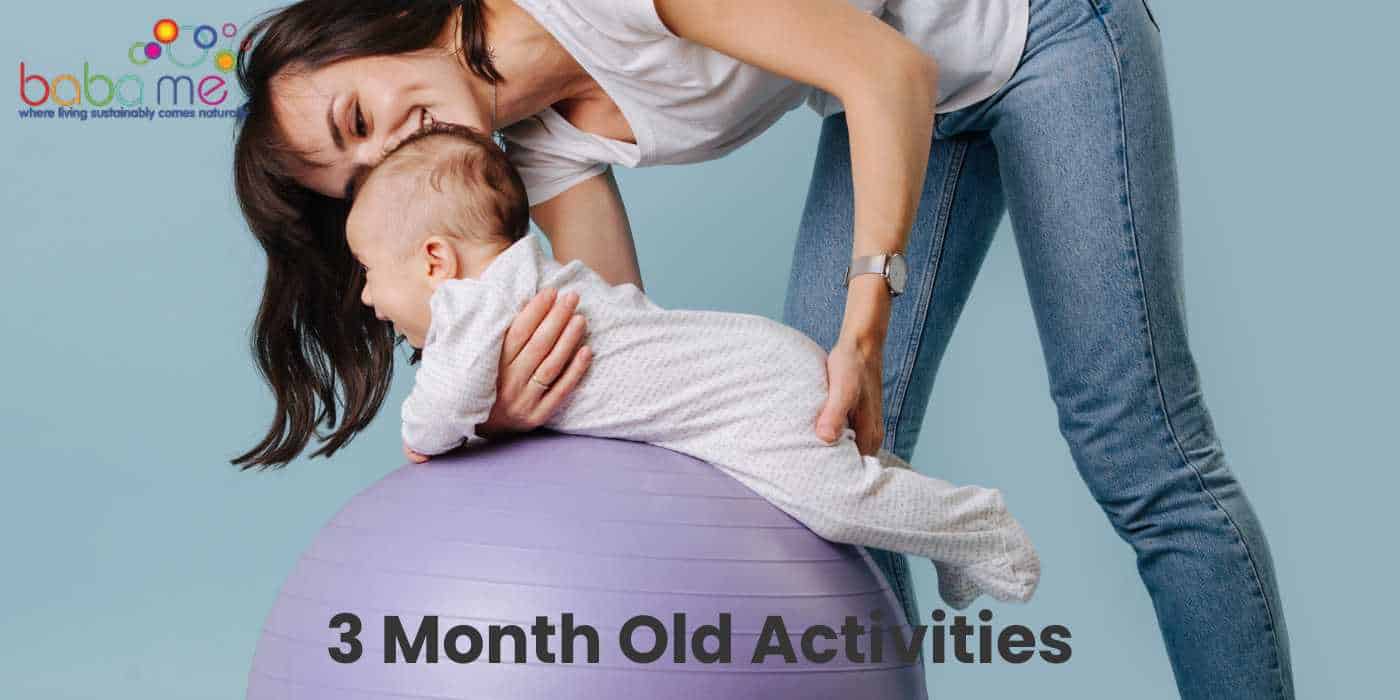Searching for activities suitable for your 3-month-old, only to be overwhelmed by the plethora of suggestions online? If so, you’re not alone. Many new parents find themselves navigating this uncharted territory, eager to provide stimulating experiences for their infants.
Fortunately, there are specific activities tailored for 3-month-olds that cater to their developmental milestones, ensuring they’re both entertained and learning.
As an expert in infant development and early childhood activities, I’ve compiled a list of the best, age-appropriate activities for 3-month-olds that have been cherished by parents and caregivers alike.
Let’s dive into these enriching suggestions, helping you offer your baby engaging experiences that support their growth and curiosity.
Sensory exploration is essential for 3-month-old babies.
Tummy time is crucial for developing motor skills and baby’s development.
Encourage movement and play to help your baby develop their gross motor skills.

30 Best Activities for Three Month Olds
1. Tummy Time
Tummy time is an essential activity to strengthen your baby’s neck and shoulder muscles. At three months, they’re becoming more capable of lifting their heads during tummy time, exploring the world from a new perspective. Laying them on a soft mat or blanket encourages them to lift their head, promoting stronger muscles for future milestones like rolling over. It’s important to practice tummy time from a very young age.
2. Mirror Play
Babies are naturally curious and often fascinated by their own reflection. Introducing them to a baby-safe mirror can help boost their self-awareness. It’s a joy to watch their surprise and delight as they realize the baby staring back is them!
3. Sing Songs
Your voice is a source of comfort for your baby. Singing nursery rhymes or lullabies can not only soothe but also introduce rhythm and language. Over time, they’ll start to recognize and enjoy favorite tunes, making this a bonding experience, and it really is so much fun.
4. High Contrast Cards
At three months, babies’ vision is still developing. High contrast black and white patterns captivate their attention, stimulating visual development. Flashing these cards can be a fun game and baby learning experience rolled into one.
5. Soft Rattles
Letting babies grasp a soft rattle allows them to explore sound and texture simultaneously. The act of holding and shaking the rattle also enhances young babies motor skills and hand-eye coordination.
6. Lap Bounces
A gentle bounce on your lap to the rhythm of a playful song can be both entertaining and calming for your baby. It’s a simple way to introduce rhythm and movement but ensure to go at their own pace, make sure they are enjoying it and stop when they seem tired.
7. Peek-a-Boo
A beloved classic, peek-a-boo teaches babies about object permanence while catering to their love for facial expressions. This simple game evokes giggles and anticipation, making it a favorite in baby’s life.
8. Outdoor Time
A change of environment can be stimulating. Taking your baby outside exposes them to new sights, sounds, and smells. Whether it’s a walk in the park or simply lounging in the backyard, the outdoors offers a sensory-rich experience and helps baby develops their sensory skills.
9. Sensory Bags
Fill soft, transparent bags with items like gel, beads, or different toys. These squishy bags provide tactile sensations, captivating your baby’s attention while promoting touch exploration/
10. Massage
Gentle baby massages can relax your little one while stimulating blood flow. Using baby-safe oils, massage can also help alleviate minor discomforts like gas.
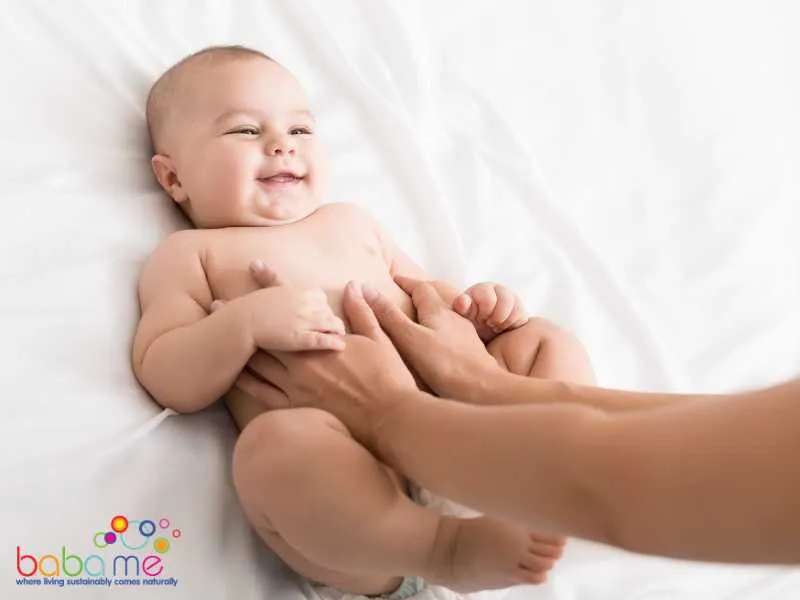
11. Read a Book
Even though they can’t understand the words yet, babies love hearing your voice. Reading to them introduces language and rhythm, setting the foundation for future language skills as baby grows.
12. Dance
Dancing with your baby isn’t just fun; it also introduces rhythm, movement, and balance. Holding them close and swaying can be a calming ritual before naptime.
13. Mobile Watching
Hang colorful or high-contrast mobiles above their crib. Their slow, predictable movement can be calming, while the colors and shapes stimulate visual tracking. Alternatively put them under a baby gym on the floor.
14. Bubble Watching
Bubbles, with their delicate float and shimmer, can captivate a baby’s attention. It encourages visual tracking and concentration as they watch each bubble’s journey.
15. Soft Toy Exploration
Toys of different textures — plush, silky, ribbed — can be fascinating for babies. They get to grasp, feel, and explore, all of which enhance tactile development, all important early childhood education.
16. Toe Wiggles
Gently wiggling their toes while singing can introduce them to the different parts of their body. It’s a playful way to bond and interact.
17. Sound Bottles
Bottles filled with rice, beads, or lentils can produce intriguing sounds. These DIY shakers promote auditory exploration and are easy to make.
18. Flashlight Tracking
In a dim room, moving a flashlight slowly across a wall can fascinate babies. It encourages them to track the light, honing their visual skills.
19. Nature Sounds
From raindrops to bird songs, nature sounds can be both calming and stimulating. They introduce your baby to the rich tapestry of sounds in the world.
20. Baby Yoga
Simple stretches and poses can aid flexibility and relaxation. Baby yoga is also a beautiful bonding experience, enhancing physical connection and can help reach their physical developmental milestones.
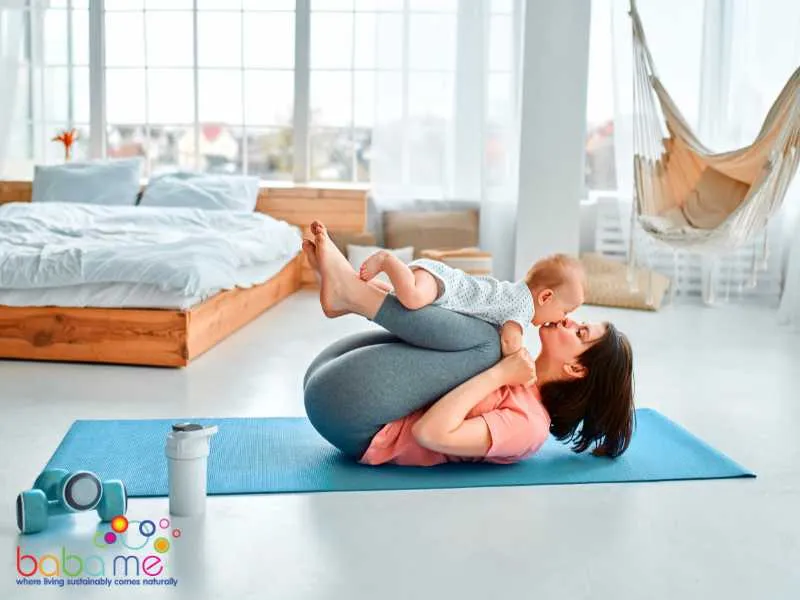
21. Cuddle Time
Holding your baby close is more than just comforting; it’s essential for emotional bonding and security. The warmth, heartbeat, and familiarity provide a safe space.
22. Talk to Them
Narrating your day or telling stories keeps them engaged and introduces them to language and sound variations. It’s a foundational step for language development.
23. Play Mats
Colorful play mats with different textures and attached toys offer visual and tactile stimulation. They can explore and play while lying on their back or during tummy time.
24. Bell Shakers
The gentle jingle of bells can captivate a baby’s auditory senses. Plus, trying to grasp the shaker enhances motor skills.
25. Face Mimicking
Making faces and waiting for your baby to mimic can be both entertaining and developmental. It enhances their observational skills and understanding of expressions.
26. Water Play
Under supervision, letting them feel water on their feet or hands can be a refreshing experience. It’s a gentle introduction to the sensations of water.
27. Soft Ball Rolls
Rolling a soft ball towards your baby encourages visual tracking. Over time, they might even try to grasp or play with it.
28. Nature Walk
A gentle stroll in nature exposes them to different sights and sounds. It’s a multisensory experience that can be both calming and stimulating.
29. Texture Cards
Cards featuring various textures — from soft velvet to rough sandpaper — can intrigue and stimulate tactile senses, broadening their sensory experiences.
30. Baby Gym
Baby gyms come equipped with dangling toys, mirrors, and different textures. They’re a playground for babies, offering entertainment and developmental benefits.
Each of these activities is designed to foster growth, exploration, and bonding, ensuring your baby’s early months are rich with experiences.
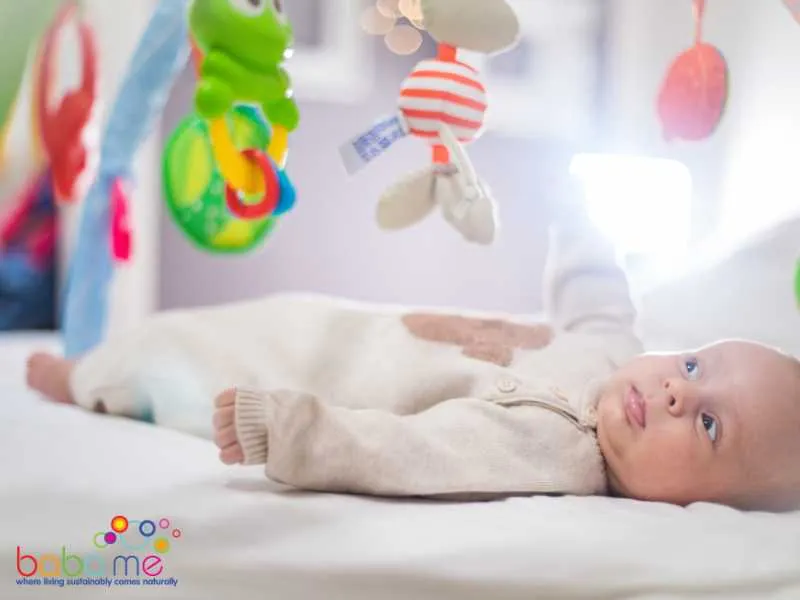
Toys and Activities for 3 Month Old
At 3 months old, your baby is starting to become more aware of their surroundings and is developing their motor skills, you will probably find that your 3 month old chewing on hands and putting everything in their mouth. Providing them with the right toys for 3 months olds and activities can help stimulate their senses and promote their development. Here are some toys and activities that your 3-month-old will enjoy:
Rattles and O-Balls
Rattles and O-balls are great toys for your 3-month-old to play with. They are easy to grip and make noise when shaken, which can help develop their hand-eye coordination and auditory senses. Look for rattles with different textures and shapes to provide a variety of sensory experiences for your baby.
Sensory Teether Toy
A sensory teether toy is a great way to help soothe your baby’s sore gums while also providing sensory stimulation. Look for teether toys with different textures and shapes to provide a variety of tactile experiences for your baby.
Play Mat
A play mat is a great way to provide a safe and comfortable space for your baby to play and explore. Look for play mats with different textures, colors, and patterns to provide a variety of sensory experiences for your baby. Some play mats also come with attached toys and activities to keep your baby entertained.
Tumama Activity Mat
TUMAMA’s Baby Gym with its black and white high contrast design stands out in our selection for its multi-functional approach to infant development. Not only does it offer an activity mat for tummy time, but it also incorporates removable toys and accessories tailored to cater to a baby’s growth from the newborn stage to an active toddler. This versatile gym emphasizes a comprehensive developmental strategy, from basic cognitive learning to motor skills, all while ensuring the baby’s comfort and safety.
What We Love
- Features 6 removable accessories, providing varied entertainment options and can be used independently or attached to strollers, cribs, and other baby gear.
- Generously sized, washable cushion ensures hygiene and offers ample space for play.
- Adjustable arches offer flexibility, ensuring the mat evolves with the baby’s developmental stages.
- Thoughtfully designed with stages in mind: lie and grasp for 0-6 months, tummy time for 6-9 months, and post 9 months, the mat supports sitting and learning.
- Aims to holistically develop a baby’s multiple abilities, from basic cognitive skills to motor functions, making it an all-in-one solution.
What We Didn’t Like
- Priced on the higher side, which might not be affordable for all.
Reaching for Toys
Encourage your baby to reach for toys by placing them just out of their reach. This can help develop their hand-eye coordination and gross motor skills. You can also hang toys from a baby play gym for your baby to reach for and pull.
Boosting Motor Skills
Your 3-month-old baby is growing and developing rapidly, and one important area of development is their motor skills. Motor skills are the abilities to move and control the body, and they include both gross motor skills (such as rolling over and sitting up) and fine motor skills (such as grasping and manipulating objects).
There are many simple and fun activities you can do with your baby to help boost their motor skills. Here are some ideas:
Tummy Time
Tummy time is an essential activity for your 3-month-old. It helps to strengthen the neck, back, and shoulder muscles and prepares them for crawling. Place your baby on their tummy on a flat, soft surface and stay close to them. You can use toys or make faces to keep them engaged.
Sensory Play
Sensory play is a great way to stimulate your baby’s senses and help them develop their motor skills. You can use different textures, colors, and sounds to engage your baby. For example, you can fill a plastic bag with water and add some food coloring to make a sensory bag. Your baby can touch and squeeze the bag to explore the water and colors.
Object Permanence
Object permanence is the understanding that objects continue to exist even when they cannot be seen. You can help your baby develop this concept by playing peek-a-boo. Cover your face with your hands and then reveal your face while saying “peek-a-boo!” This will help your baby learn that you are still there even when they can’t see you.
Cause and Effect
Cause and effect is the understanding that one action leads to another. You can help your baby develop this concept by playing with toys that have cause-and-effect features. For example, you can give your baby a toy that makes a sound when they press a button or pull a lever.
Hand-Eye Coordination and Tracking
Hand-eye coordination and tracking are important skills for your baby to develop. You can help them by holding a toy in front of them and encouraging them to reach for it. You can also move the toy around to help them track it with their eyes.

Language and Communication
At 3 months old, your baby is starting to develop their language and communication skills. Here are some activities that can help encourage their progress:
Talking, Communicating, and Imitating
Talking to your baby in a high-pitched, sing-song voice can help keep their attention and encourage them to respond. You can also try imitating your baby’s coos and babbles to show them that you are listening and that their sounds have meaning.
Babbling
Around 3 months old, your baby will start to babble more frequently. Encourage this behavior by responding to their babbling with your own sounds and words. You can also try repeating the sounds your baby makes to help them develop their listening skills.
Vocabulary
Your baby’s vocabulary is still very limited at 3 months old, but you can help expand it by using simple words and phrases in your conversations with them. For example, you can point out objects in the room and name them, or describe the actions you are taking as you care for your baby.
Language Development
At 3 months old, your baby is just beginning to develop their language skills. You can help support this development by reading to your baby, singing songs, and engaging in conversation with them. These activities can help your baby learn new words and sounds, and develop their listening and communication skills.
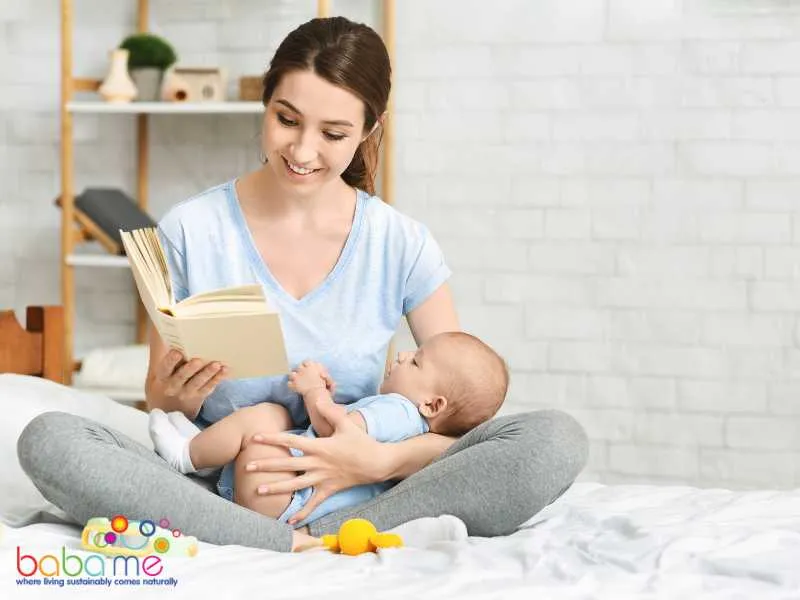
Social Skills and Bonding
At 3 months old, your baby is starting to develop their social skills and is becoming more aware of their surroundings. This is a great opportunity to bond with your little one and help them develop their social-emotional skills. Here are some activities you can do to promote bonding and social skills:
Eye Contact
Making eye contact with your baby is a great way to bond with them and help them develop their social skills. When you talk to your baby, look them in the eye and smile. This will help your baby feel loved and secure, and it will also help them learn how to communicate.
Imitating
Your baby is starting to learn how to imitate your actions, so take advantage of this by playing games like peek-a-boo or making funny faces. This will help your baby learn how to communicate and understand social cues.
Play Date
Setting up a play date with another baby around the same age as yours is a great way to help them develop their social skills. This will give them the opportunity to interact with another baby and learn how to share and take turns.
Bonding
Spending time bonding with your baby is crucial for their emotional development. This can include cuddling, singing, and talking to your baby. The more time you spend with your baby, the stronger your bond will be.
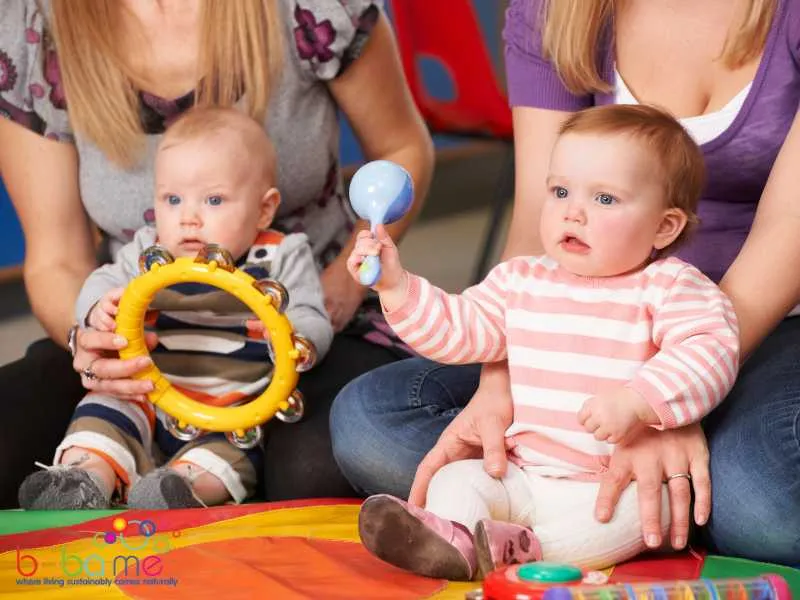
Music and Rhymes
At three months old, your baby is starting to become more aware of their surroundings and is developing their senses. Music and rhymes are great activities to help stimulate your baby’s senses and promote their cognitive development.
Singing nursery rhymes and songs to your baby can help them learn new words and sounds. You can also try clapping along to the beat of the song or gently tapping your baby’s hands and feet to the rhythm. Action songs like “Pat-a-cake” are also great for engaging your baby’s senses and promoting their hand-eye coordination.
Rhymes and clapping songs are fun activities that you can do with your baby to help them develop their language skills. You can recite classic nursery rhymes like “Twinkle, Twinkle, Little Star” or “Mary Had a Little Lamb.” Clapping songs like “Miss Mary Mack” are also great for promoting your baby’s motor skills and hand-eye coordination.
Reading and Visual Stimulation
At three months old, your baby is beginning to develop their vision and language skills. Reading together is a great way to support your baby’s language development and provide visual stimulation. Reading together with your baby as young as 4 months old increases the chances that parents continue reading to babies as they get older.
Choose board books with high-contrast pictures and simple text to capture your baby’s attention. Point to the pictures and name them as you read. Your baby will begin to associate the picture with the word and eventually start to recognize the objects in real life.
Your baby will also enjoy looking at their reflection in a mirror. Place a small mirror in front of your baby during playtime to provide a fun and engaging visual stimulation.
Tracking toys and people is another way to support your baby’s visual development. Hold a toy in front of your baby and move it slowly from side to side. Your baby will follow the toy with their eyes and begin to develop their tracking skills. You can also move around the room while holding your baby, allowing them to look at different objects and people.
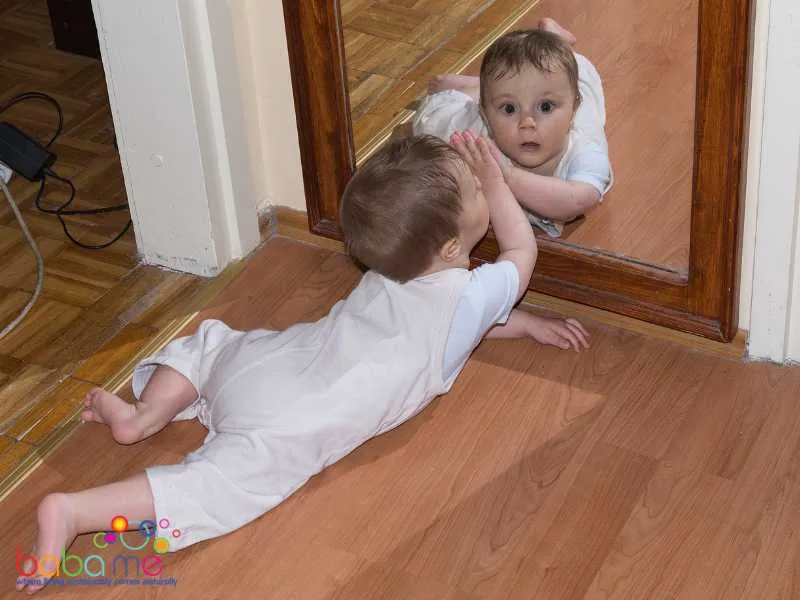
Tips for Preventing Flat Spots
One way you can help promote your baby’s health is by preventing flat spots on their head. Here are some tips to help you prevent flat spots on your baby’s head:
Change Sleeping Positions
Changing your baby’s sleeping position can help prevent flat spots on their head. Changing the direction that your baby sleeps each night can help prevent flat spots. This way, your baby will be drawn to look at you from their crib, causing them to rest on alternating sides of their head.
Tummy Time
Tummy time is a great way to promote motor skills and help your baby develop their neck and shoulder muscles. Placing your baby on their stomach when they are awake and supervised can help prevent flat spots on their head.
Minimize Time in Baby Gear
While baby gear like swings, bouncers, and car seats can be convenient, it’s important to limit the amount of time your baby spends in them. Minimizing time in baby gear can help prevent flat spots on your baby’s head.
Alternate Holding Positions
Holding your baby in different positions can help prevent flat spots on their head. Alternating holding positions can help prevent your baby’s head from resting in the same spot for too long.
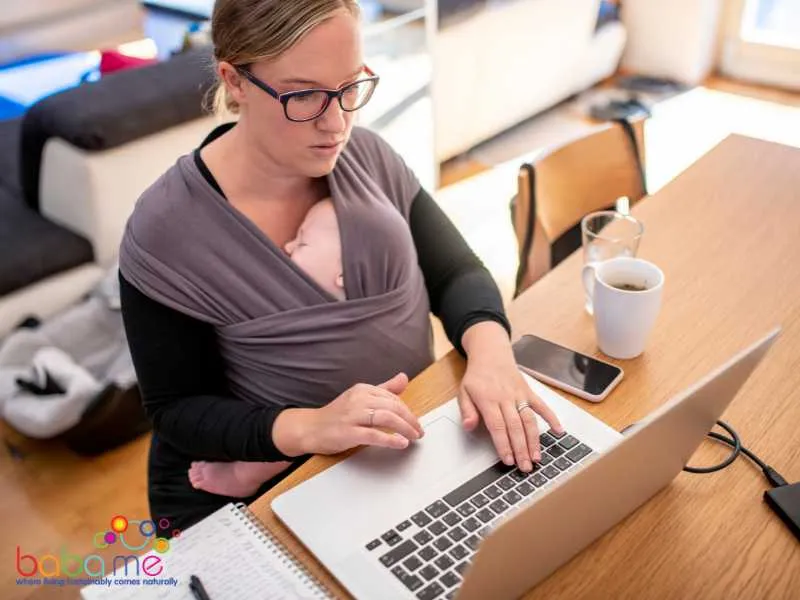
FAQs on Best Activites for 3 Month Old Baby
How do you entertain a 3 month old?
Tummy Time: This helps strengthen the neck and back muscles. Lay your baby on their stomach and encourage them to lift their head by placing colorful toys in front of them. For young babies, its important to practice tummy time to help the baby’s development, paving the way for milestones like baby sit-ups and other developmental milestones.
Mirror Play: Babies are often fascinated by their reflection. Show them their image in a baby-safe mirror.
Sensory Play: Introduce soft toys with different textures to touch and explore.
Mobiles: Hang colorful mobiles above their crib or play area. The movement and colors can be captivating.
Soft Music and Lullabies: Music can be soothing. You might also notice them starting to sway or bounce to rhythms.
High Contrast Cards: Flashing black and white cards can help in visual development as babies at this age are drawn to high contrast images.
What do you do all day with a 3 month old?
Feeding: By now, you’d be in a feeding routine, be it breastfeeding or formula feeding.
Diaper Changes: Frequent diaper changes will still be a significant part of the day.
Short Nap Times: Babies at this age sleep a lot but in shorter bursts during the day.
Interactive Play: This can include making funny faces, gentle tickles, or baby exercises.
Reading: Even though they don’t understand the words, listening to your voice is soothing.
Strolls: Taking them out in a pram or baby carrier for some fresh air.
Bathing: By 3 months, most babies start enjoying their bath time.
Bonding: Simple cuddles, talking to them, or even gentle massages.
What kind of play does a 3 month old need?
Motor Skill Development: This includes activities that encourage them to move, like reaching out for toys.
Sensory Play: Activities that stimulate their senses. This can include rattles for hearing, soft toys for touch, and colorful toys for vision.
Social Interaction: Babies benefit from seeing facial expressions, hearing voices, and physical touch.
Exploration: They are beginning to grasp objects, so safe toys they can hold onto can be introduced.
What new things should my 3 month old be doing?
Smiling Socially: Around this age, most babies begin to smile in response to stimuli or faces.
Holding Head Up: During tummy time, they should be able to lift and hold their head up for short periods.
Grasping Objects: They’ll start holding onto toys or your fingers.
Mimicking: They may mimic simple facial expressions or mouth movements.
Coos and Gurgles: They’ll start to ‘talk’ back when you speak to them.
Following Objects: With their eyes, they should be able to track a moving object, especially bright and colorful ones.

